Ingrown Toenails | Onychocryptosis
An ingrown toenail occurs when a piece of the nail grows into the surrounding skin, also referred to as a nail spicule. Possible causes of ingrown toenails include improper nail trimming, trauma to the toenail(s), tight-fitting footwear, poor foot hygiene, hereditary, and/or foot and bone changes throughout your lifetime.
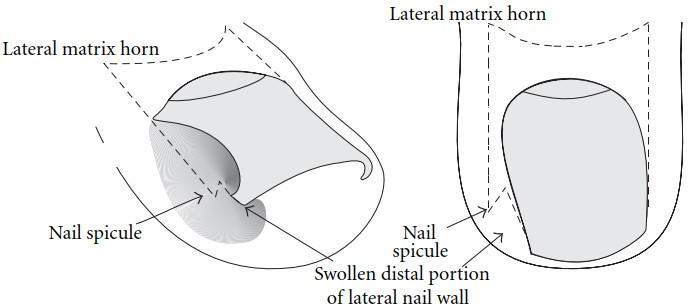
Haneke (2012)
Interesting Fact: The most common cause of ingrown toenails is improper
nail trimming (DeLauro and DeLauro, 2004).
3 Stages of Ingrown Toenails
Stage 1: The nail spicule continues to grow which may put pressure on the surrounding skin. This causes extra skin to develop and a painful sensation can occur.
Stage 2: The nail spicule may puncture the skin and create a portal of entry for pathogens (germs) into your body. Your body will then begin an immune response to fight off these pathogens. There may be clear or milky fluid (pus or discharge) and swelling of the surrounding tissue that is painful to touch. This is the start of an infected ingrown toenail.
Stage 3: When an ingrown toenail becomes infected, it will appear red and swollen, feel hot and painful to touch, and excessive discharge will continue. Oral and/or topical antibiotics may be required to treat the infection. However, if the underlying issue is not addressed, these symptoms will return and the cycle will continue.
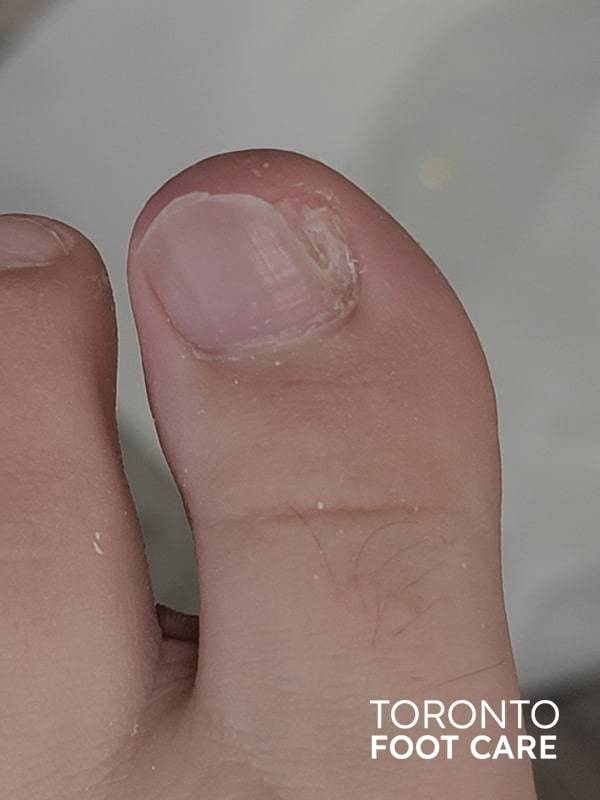
Stage 1
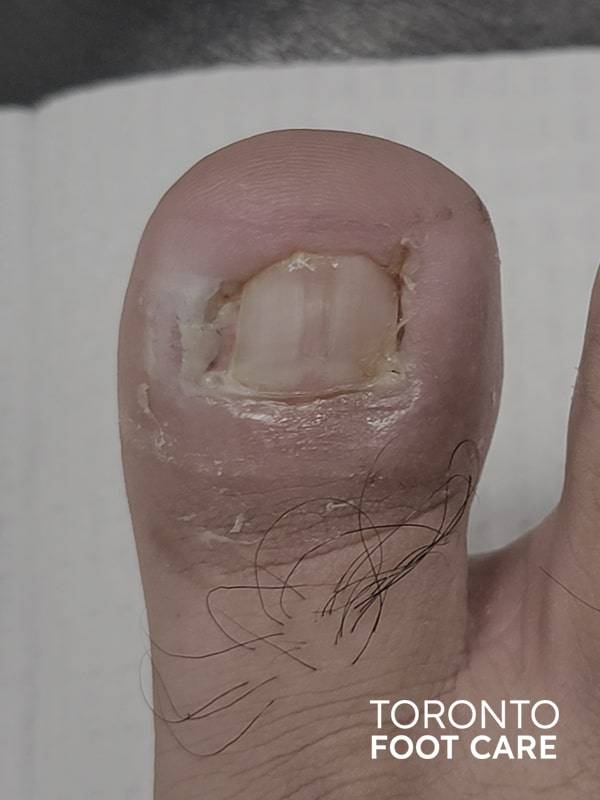
Stage 2
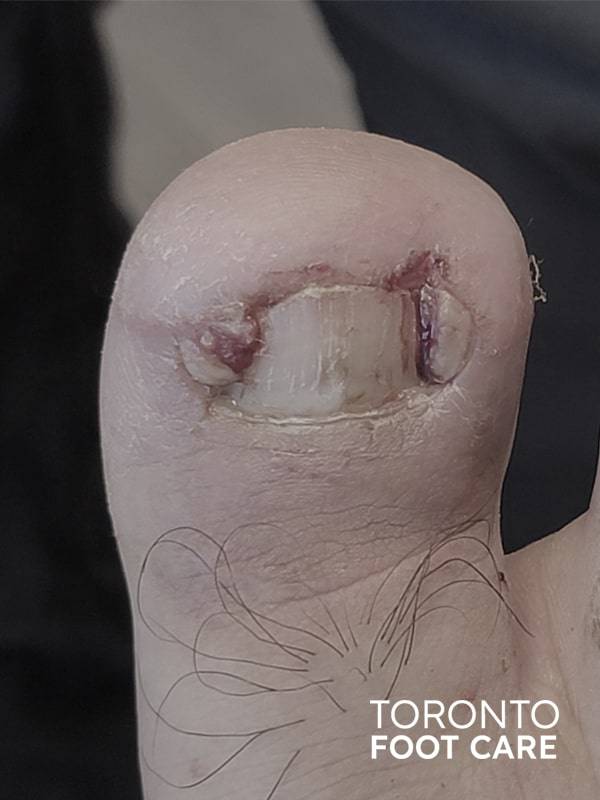
Stage 3
Ingrown Toenail Treatment Options
At Toronto Foot Care, we aim to treat every condition as comfortably as possible. We will provide a treatment plan and educate every patient on preventative techniques for ingrown toenails.
Each treatment depends on the severity of the ingrown toenail. The main goal will be removing the nail spicule (the cause). This may mean freezing the area if necessary using local anesthetic. Once the ingrown toenail is removed, the next step is to tackle the infection. Antibiotics may be prescribed in the case of infection.
During the appointment, the chiropodist will discuss techniques for trimming your nails and different strategies to prevent reoccurrence. If the ingrown toenail continues to occur, a permanent toenail removal may be required. This procedure is called a Partial Nail Avulsion with Matrixectomy.
We often recommend a permanent ingrown toenail procedure as a solution for patients who suffer from recurrent ingrown toenails, pincer nails (pinches the nail bed), or involuted nails (corners with hooks or staple-like appearance).
The procedure is safe, minimally invasive, and has a very high success rate. With proper techniques and procedures, there is a 97.9% success rate with no reoccurrence of the ingrown toenail (Tatlican et al., 2009).
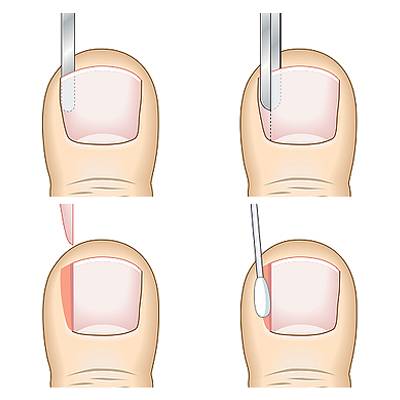
Ready for your first visit?
Book an appointment today or call us at (416) 444-3668 to learn more about our foot care services.
DeLauro, N. M., & DeLauro, T. M. (2004). Onychocryptosis. Clinics in Podiatric Medicine and Surgery, 21(4), 617–630.
Tatlican, S., Yamangöktürk, B. Eren, C., Eskioğlu, F., & Adiyaman, S. (2009). Comparison of phenol applications of different durations for the cauterization of the germinal matrix: an efficacy and safety study. Turkish Association of Orthopaedics and Traumatology, 43(4), 298–302.
Haneke E. (2012). Controversies in the treatment of ingrown nails. Dermatology Research and Practice, 2012, 783924.
